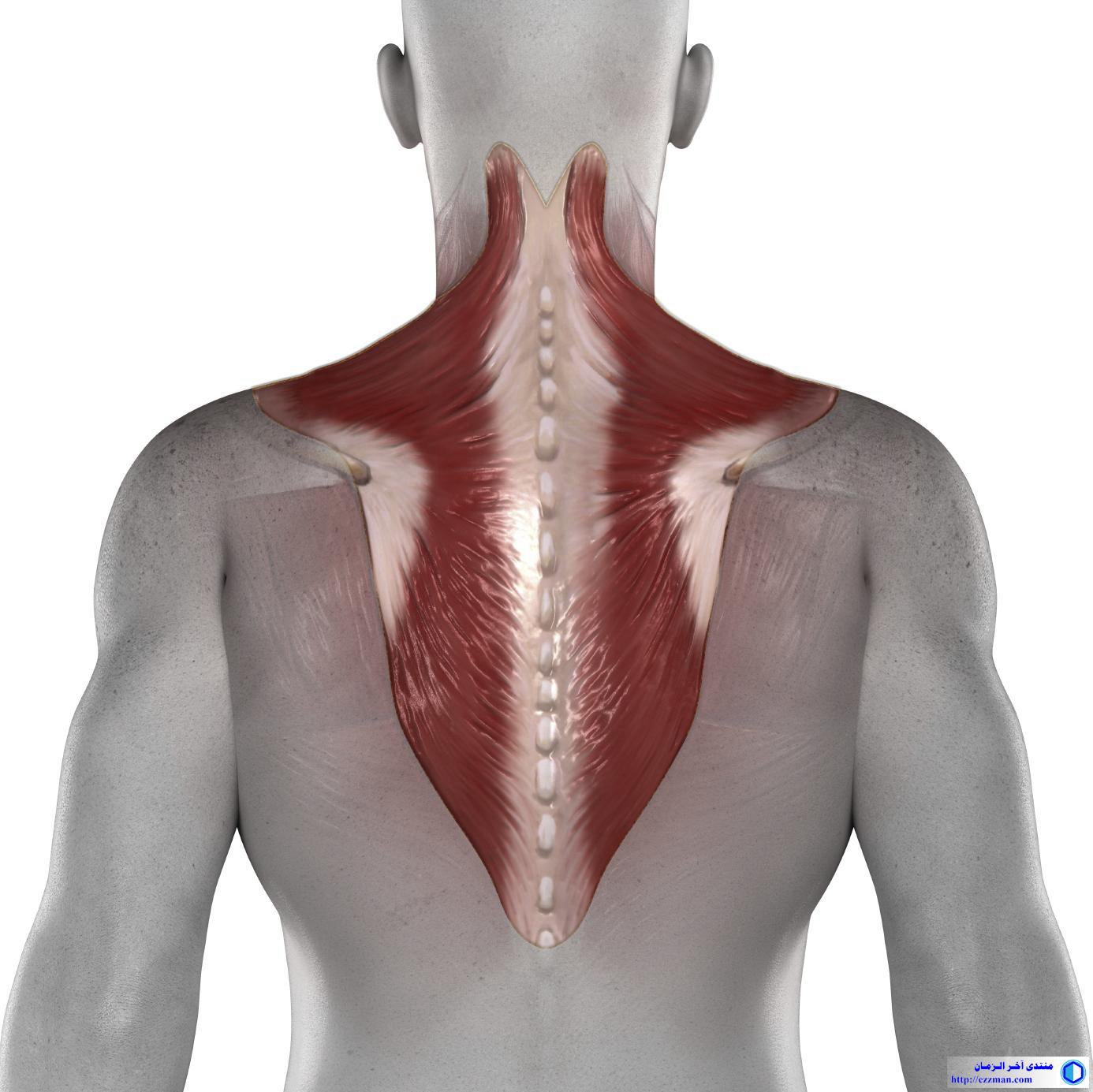When it comes to building a strong, impressive upper body, the trapezius muscles—often referred to as the “traps”—are key players. These muscles, extending from the neck to the mid-back, are not only vital for strength but also contribute significantly to the aesthetic look of a well-defined upper body. Whether you’re aiming for a powerful physique or just want to increase your upper-body strength, focusing on the trapezius muscles can bring noticeable results. This article will explore the best methods to grow your trapezius muscles, providing proven techniques that will help you achieve mass and strength.
Understanding the Trapezius Muscles
Before diving into the best exercises, it’s important to understand the anatomy of the trapezius. The trapezius muscle is a large, triangular muscle that spans the neck, shoulders, and upper back. It is divided into three main sections:
- Upper Trapezius: The part that helps with elevating the shoulders and neck movement.
- Middle Trapezius: Responsible for scapular retraction (pulling the shoulder blades together).
- Lower Trapezius: Involved in scapular depression (pulling the shoulder blades downward).
Each part of the trapezius muscle plays a different role in movement and posture. To effectively grow your traps, you need a balanced workout that targets all three areas. Let’s dive into the top techniques to build the trapezius muscle.
1. Shrugs: The Ultimate Trapezius Builder
Shrugs are the gold standard for developing the upper trapezius. This simple yet powerful exercise focuses on isolating the traps, allowing you to overload them with heavy weight.
How to Perform Shrugs:
- Stand upright holding a pair of dumbbells or a barbell.
- Keep your arms straight and your body in a neutral position.
- Slowly shrug your shoulders upward, as if you’re trying to touch your ears with your shoulders.
- Hold the contraction at the top for a second, then slowly lower your shoulders back to the starting position.
Pro Tips:
- Focus on slow, controlled movements to engage the muscle fully.
- Avoid rolling your shoulders, as this can cause injury.
- Use progressively heavier weights to build muscle mass over time.
Shrugs are perfect for building mass in the upper traps, and when performed with correct form, they offer an excellent way to overload the muscles for growth.
2. Deadlifts: A Compound Movement for Total Trap Development
While deadlifts are primarily known for working the lower back and legs, they are also incredibly effective for developing the entire trapezius muscle. Deadlifts engage the upper, middle, and lower traps, providing a comprehensive workout.
How to Perform Deadlifts:
- Stand with your feet hip-width apart, with a loaded barbell on the floor in front of you.
- Bend at the hips and knees, keeping your back straight, and grip the barbell with your hands just outside your knees.
- Drive through your heels to lift the barbell off the ground, extending your hips and knees as you stand upright.
- Once fully extended, lower the barbell back to the ground in a controlled manner.
Pro Tips:
- Keep the barbell close to your body throughout the lift to maintain proper form.
- Engage your core and keep your back flat to avoid injury.
- Incorporate deadlifts into your routine to hit the traps as part of a compound movement, ensuring overall development.
3. Barbell Rows: Middle Trap and Upper Back Strength
Barbell rows are fantastic for strengthening the middle trapezius. This exercise targets the muscles responsible for pulling the shoulder blades together, which helps create a thicker, more defined upper back.
How to Perform Barbell Rows:
- Stand with your feet shoulder-width apart, holding a barbell with an overhand grip.
- Bend at the hips while keeping your back straight and knees slightly bent.
- Pull the barbell toward your lower chest, keeping your elbows close to your body.
- Squeeze your shoulder blades together at the top of the movement, then lower the barbell in a controlled manner.
Pro Tips:
- Focus on squeezing the shoulder blades together to fully engage the traps.
- Keep your body stable and avoid using momentum to lift the barbell.
- Barbell rows are excellent for building the middle traps, but they also engage the lats and rhomboids, contributing to overall back strength.
4. Face Pulls: Targeting the Lower Traps
Face pulls are an often-overlooked exercise that effectively targets the lower trapezius and improves shoulder health. They are essential for creating balance in the upper body and preventing postural issues.
How to Perform Face Pulls:
- Attach a rope to a cable machine set at chest height.
- Stand facing the machine, holding the rope with both hands in an overhand grip.
- Step back slightly to create tension in the cable.
- Pull the rope toward your face, keeping your elbows high and focusing on squeezing your shoulder blades together.
- Slowly return to the starting position.
Pro Tips:
- Use lighter weights to focus on form and muscle activation.
- Incorporate face pulls into your routine to strengthen the lower traps and improve shoulder stability.
5. Farmer’s Walk: Building Functional Trap Strength
The Farmer’s Walk is a functional movement that targets the traps, shoulders, and grip strength. This exercise involves carrying heavy weights for a set distance or time, and it works to develop the entire trapezius muscle while enhancing endurance.
How to Perform Farmer’s Walk:
- Pick up a pair of heavy dumbbells or kettlebells, keeping your arms straight and shoulders back.
- Walk a set distance while maintaining good posture, keeping your core engaged and your shoulders relaxed but stable.
- Once you’ve completed the distance, put the weights down and rest before repeating.
Pro Tips:
- Start with lighter weights and progressively increase the load as you get stronger.
- Ensure you maintain a steady pace and avoid rushing through the movement.
- The Farmer’s Walk is a great finisher for your workout routine, as it not only builds the traps but also improves grip strength and overall stability.
6. Overhead Press: Strengthening the Upper Traps
The overhead press primarily targets the shoulders, but it also engages the upper trapezius muscles. This compound movement helps to develop the traps while enhancing shoulder stability and strength.
How to Perform Overhead Press:
- Stand with your feet shoulder-width apart, holding a barbell or dumbbells at shoulder height.
- Press the weight overhead until your arms are fully extended.
- Lower the weight back down to shoulder height in a controlled manner.
Pro Tips:
- Keep your core engaged to maintain balance and prevent arching your lower back.
- Overhead presses are a great addition to your trap workout routine, as they provide indirect stimulation to the upper traps.
Structuring Your Trapezius Workout Routine

When focusing on building the trapezius muscles, it’s important to structure your workout to ensure you’re targeting all three sections of the traps. A balanced routine might look like this:
- Shrugs: 4 sets of 10-12 reps
- Deadlifts: 4 sets of 6-8 reps
- Barbell Rows: 3 sets of 8-10 reps
- Face Pulls: 3 sets of 12-15 reps
- Farmer’s Walk: 3 sets of 30-60 seconds
- Overhead Press: 3 sets of 8-10 reps
Incorporate this routine into your weekly workout plan, allowing enough rest for muscle recovery. Aim to train your traps 1-2 times per week for optimal growth.
Conclusion
Building bigger, stronger trapezius muscles requires a combination of targeted exercises, progressive overload, and consistent effort. By incorporating a variety of movements such as shrugs, deadlifts, and barbell rows, you can ensure that all areas of the traps are engaged and developed. Remember to focus on proper form, increase weights gradually, and allow time for recovery to see the best results.
For further reading and scientific insights on muscle building, check out these trusted resources:
- American Council on Exercise – Strength Training Exercises for Trapezius
- National Strength and Conditioning Association – Muscle Hypertrophy Guidelines
- Journal of Strength and Conditioning Research – Trapezius Muscle Activity
These sources provide in-depth knowledge on muscle growth techniques and exercise science to help you optimize your training routine.



